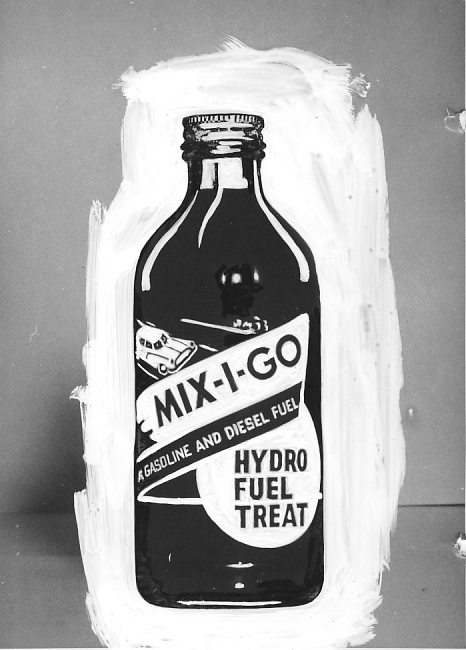We Like Ike's Interstates! Better summer road trips for 55 years.
Happy 55th birthday to the Federal Interstate System!

When you've been around as long as we have, you've seen how the world has changed. Can you imagine what life was like before Woodrow Wilson was president? That's basically how long we've been around. The times have changed and so has the name. Bell Laboratory. Bell Additives. Bell Performance. Three names which have come to signify quality, value, problem-solving and innovation to thousands of consumers around the world over the last 100+ (actually now 104) years. Join us here at the Bell Blog as we review history decade-by-decade and also throw in a few tidbits about what we were doing while the world was changing around us all.
The times have changed and so has the name. Bell Laboratory. Bell Additives. Bell Performance. Three names which have come to signify quality, value, problem-solving and innovation to thousands of consumers around the world over the last 100+ (actually now 104) years. Join us here at the Bell Blog as we review history decade-by-decade and also throw in a few tidbits about what we were doing while the world was changing around us all.
Okay, technically it's not one decade but two. The journey of quality and performance traveled by Bell Performance is tied into the story of Robert J. Bell, a prolific inventor and creative mind who would give birth to an industry that represents billions of dollars in sales in the current day.
In 1907 and 1908, as the second decade of the century prepared to open, the nation was ripe and ready for the mass production of an invention which would change the American landscape - the automobile. Henry Ford had introduced his Model T car and would change the country by developing production methods which enabled the vehicle to be marketed and priced fairly for every American consumer.
Innovator Henry Ford implemented the concepts of the assembly line into the production of his automobiles. This culminated in 1914 with the Model T becoming the first automobile to be mass-produced on an assembly line with interchangeable parts. Borrowing the idea from a slaughterhouse in Chicago’s Union Stock Yards, Ford took the concept of one person performing the same task repeatedly and adapted it, through trial and error, for the production of his automobiles.
The result changed the face of American manufacturing and business performance. Ford was able to reduce the time needed to produce a car from over 12 hours to just 93 minutes, with finished cars rolling off the assembly line every three minutes. This increased efficiency enabled Ford to lower the cost of the Model T for the average person to $850 or less, making it truly a car for every man.
Better performance in manufacturing led to the Ford Company dominating the automobile market, producing more cars in 1914 than all other manufacturers put together. By the time the 10 millionth car rolled off the line from Ford, nine out of every ten cars on the planet were Fords.
Mr. Bell had the knowledge and foresight to realize that the fuel to be used in the cars of his time would not burn cleanly and would leave significant deposits in the engine, leading to loss of performance and reduced equipment life. Realizing this, Bell set out to develop a convenient treatment which could be added to the fuel and which would keep the engines clean and restore performance for vehicles. His final formulation, called O-M-I-GO 76 would pioneer an entirely new industry - the fuel additive industry, and become the first fuel additive in American history.
 Robert Bell would call his new product “a laxative for all gasoline engines” because it released sticky valves (by cleaning the deposits that would accumulate and “gum them up”) and promoted more efficient combustion of the fuel. Nobody said Robert Bell's marketing ideas wouldn't sound funny a hundred years later.
Robert Bell would call his new product “a laxative for all gasoline engines” because it released sticky valves (by cleaning the deposits that would accumulate and “gum them up”) and promoted more efficient combustion of the fuel. Nobody said Robert Bell's marketing ideas wouldn't sound funny a hundred years later. As our nation embraced this new automobile technology with great fervor, Robert Bell began production of his new fuel additive in Richmond, Virginia and continued to do so for decades until his death in 1957. Even after the invention of his flagship fuel product, Robert Bell’s innovative mind stayed hard at work in his laboratory leading to more than 70 patents and
As our nation embraced this new automobile technology with great fervor, Robert Bell began production of his new fuel additive in Richmond, Virginia and continued to do so for decades until his death in 1957. Even after the invention of his flagship fuel product, Robert Bell’s innovative mind stayed hard at work in his laboratory leading to more than 70 patents and
trademarks, including the first vending machine, a collapsible barrel, anti-theft window brackets, children’s toys, and an early version of today’s parking meters.
Robert J. Bell was truly one of the 20th century’s great innovators. Thanks to Robert Bell’s innovations in the early decades of the 20th century, American drivers have experienced a century of better performance, better care for the environment and longer life for their vehicles. This value-added service has been felt on a global basis.
Join us next time to learn about 1920s and which Bell product invented during The Roaring ‘20s is being sold today.

Happy 55th birthday to the Federal Interstate System!
As you drive by your nearest gas station, it probably brings a smile to your face to see gas prices dropping below $2.50 for the first time in five...
When writing our earlier blog entry on things that cause gas prices to rise and fall, we realized that there was a lot to say about what makes up the...